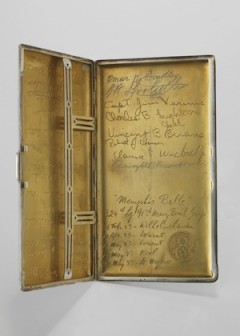I especially appreciated what Nichols said (45 minutes in) about “the froggy conspiracy.” In A Talent for Trouble, I pointed out (as recently mentioned here) that Wyler’s movies had been “the touchstone for an entire generation but were later dismissed by auteurist snobs.” Here’s what Nichols says:
The people who describe all our work to us often don’t know what they’re talking about. They’re wrong. They’re literally people who think that expressing an opinion is a creative act. The auteur stuff — I think they’re these French guys with cigarette ashes all over them, they basically misunderstood the whole thing. The first thing they misunderstood is the so-called pantheon of great directors because, as we know, French people have some bizarre perception of our movies. … Howard Hawks was a wonderful director, but he was not the greatest director Hollywood ever knew. The guys with the cigarette ashes on them ignored our greatest directors and humiliated George Stevens, Willy Wyler, Billy Wilder — Billy Wilder not so much, he became fashionable again. But the tragedy of Willy and Stevens and Fred Zinnemann, these were great men, but they just weren’t part of the froggy conspiracy.
As Nichols continued talking, it could have been Wyler himself speaking:
To say it’s the work of one man is to completely misunderstand a quite mysterious process. And the only answer to it is, it’s different with different pictures. You know, if Robert Bolt has written a picture, I would say the script has a lot to do with it. Even David Lean, who was, god knows, a great director, maybe THE great director, yes — but Bolt wrote the goddamned script. What? Is it only David Lean? No! And so on and so forth down the line. One man can’t make a movie. But, it is necessary that all the decisions, down to which cup [to use], which line, when you make the cut, which desert, come from one mind. That really is necessary.

Willy Wyler’s WWII cigarette case
(signed by five crew members of the Memphis Belle, and also by Generals Omar Bradley, "Jimmy" Doolittle, and Dwight Eisenhower). Click to enlarge.
Change of subject: I’m told Wyler will be getting a memorial space at the American Air Museum in Duxford, England, which is opening on March 19. “They are giving Willy a corner all his own!” his daughter Catherine Wyler says. Wyler’s wartime documentary, “The Memphis Belle: A Story of a Flying Fortress,” captures the experience of an American B-17 bomber crew, which carried out 25 missions from a base in Britain during World War II. Wyler went on five bombing runs over Germany and France, and nearly died while shooting much of the film’s aerial combat footage himself.

